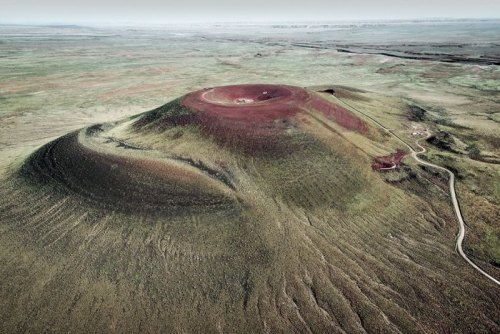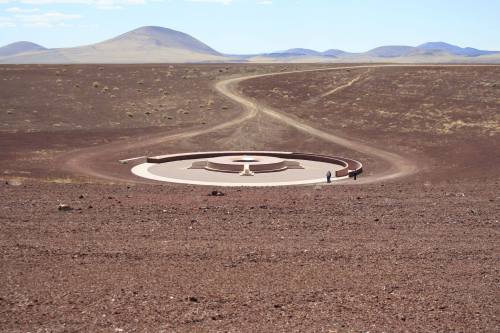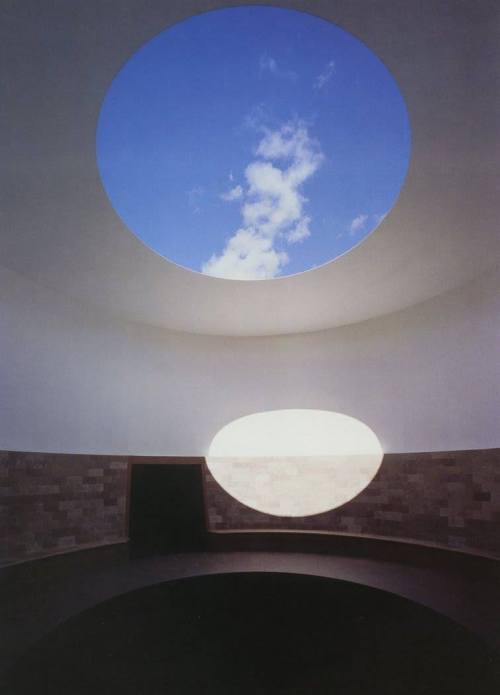Where geology meets art: Roden CraterSome 400,000 years ago a volcanic eruption took place near Flag
Where geology meets art: Roden CraterSome 400,000 years ago a volcanic eruption took place near Flagstaff in Arizona. It wasn’t particularly impressive, producing a cinder cone of basaltic lava spatters that is now termed by geologists as a monogenetic cone (ie born in one eruption) in the San Francisco Volcanic Field (which we previously covered at http://on.fb.me/1Gvr3t6). The entire region is subject to extensional tectonics, pulling the crust apart and creating the Basin and Range province, along with its many attendant volcanic effects.The resultant cone, some 5 km across and 200 metres high, was bought in 1972 by an artist named James Turrell, who has spent the intervening decades transforming geology’s artwork into a hybrid of human and natural inspiration. The crater within has been used to channel light, and caverns have been sculpted within the edifice to create a naked eye observatory, from which solar and celestial events such as solstices are enjoyed. While it was supposed to be open to viewing in 2011, the possibility has only just materialised, a snip at $6,500 per visit.As he puts it himself, “I want to create an atmosphere that can be consciously plumbed with seeing, like the wordless thought that comes from looking in a fire.” And then intent behind his pieces it to create lightscapes of contemplation. Many ancient observatories were used as inspiration, including Stonehenge (see http://on.fb.me/1w9mLxE and http://on.fb.me/1IAvL8v ), Newgrange (see http://on.fb.me/1L66yGq) and Machu Pichu.As the artist puts it ‘At Roden Crater I was interested in taking the cultural artifice of art out into the natural surround. I did not want the work to be a mark upon nature, but I wanted the work to be enfolded in nature in such a way that light from the sun, moon and stars empowered the spaces … I wanted an area where you had a sense of standing on the planet. I wanted an area of exposed geology like the Grand Canyon or the Painted Desert, where you could feel geologic time. Then in this stage set of geologic time, I wanted to make spaces that engaged celestial events in light so that the spaces performed a “music of the spheres” in light. The sequence of spaces, leading up to the final large space at the top of the crater, magnifies events. The work I do intensifies the experience of light by isolating it and occluding light from events not looked at. I have selected different portions of the sky and a limited number of events for each of the spaces. This is a reason for the large number of spaces.’With its labyrinth of chambers, tunnels and astronomical viewing spaces, as a project for artistically uniting Earth and Sky and playing with light, it seems like a fine game to me. I also covered the enigmatic and Cthulhoid sculpted caves of Ra Paulette at http://on.fb.me/1dyNpyD.LozImage credit: Joan Myers/Florian Holzherr/James Turrel/PBShttp://rodencrater.com/http://nyti.ms/1C0Iexlhttps://vimeo.com/67926427http://bit.ly/1IwV1fQhttp://bit.ly/1vkf2TUhttp://bit.ly/1IJgIvWhttp://bit.ly/1IwW2V5 -- source link
Tumblr Blog : the-earth-story.com
#science#arizona#crater#geology#roden crater#flagstaff#nature#landscape#san francisco#volcano#volcanic



